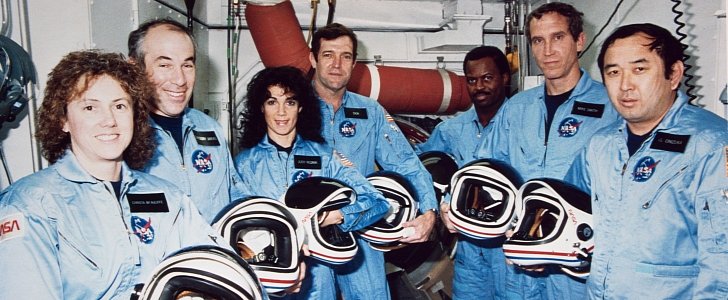On April 4, 1983, the second space shuttle to be ever built, the Challenger, was launched for the first time as part of the STS-6 mission. Three years and nine missions later, on January 28, 1986, Challenger exploded on live TV, killing seven people, including the woman who was set to become the first civilian in space.
33 years after what has come to be known as the Challenger disaster, images of the shuttle exploding soon after takeoff still make for some of the most dramatic footage ever shown on live television.
Challenger took off apparently without a problem in the 25th overall space shuttle mission, following several days of delays caused by logistical issues, a malfunction of the exterior access hatch and bad weather.
The first minute or so into the flight everything seemed to go as planned. Mission control was reading data and reporting everything is nominal, while television reporters were casually covering the moment when an American teacher was about to reach space.
Merely 73 seconds after launch, reporters fell silent as the Challenger grew brighter then it should have on the Florida morning sky. A big ball of smoke and flames then separated into something that from below looked like a two prong fork. Mission control fell silent too.
Soon, it became obvious that none of the seven people that went up will never come back down alive.
What followed was a frantic search for the bodies of the astronauts and the debris from the shuttle and its rockets. As a result of the explosion, the space shuttle program was put on halt for nearly three years.
The investigation into the disaster found that the Challenger disaster was caused by the failure of an O-ring seal used in the right solid rocket booster. Due to extremely low temperatures prior to launch, the O-ring snapped and caused a breach in the solid rocket booster that in turn caused insurmountable damage to the fuel tank.
The names of those who have perished due to this O-ring failure are Francis Scobee, Mike Smith, Judith Resnik, Ron McNair, Ellison Onizuka, Christa McAuliffe and Greg Jarvis.
Their deaths were watched live by around 17 percent of Americans.
Challenger took off apparently without a problem in the 25th overall space shuttle mission, following several days of delays caused by logistical issues, a malfunction of the exterior access hatch and bad weather.
The first minute or so into the flight everything seemed to go as planned. Mission control was reading data and reporting everything is nominal, while television reporters were casually covering the moment when an American teacher was about to reach space.
Merely 73 seconds after launch, reporters fell silent as the Challenger grew brighter then it should have on the Florida morning sky. A big ball of smoke and flames then separated into something that from below looked like a two prong fork. Mission control fell silent too.
Soon, it became obvious that none of the seven people that went up will never come back down alive.
What followed was a frantic search for the bodies of the astronauts and the debris from the shuttle and its rockets. As a result of the explosion, the space shuttle program was put on halt for nearly three years.
The investigation into the disaster found that the Challenger disaster was caused by the failure of an O-ring seal used in the right solid rocket booster. Due to extremely low temperatures prior to launch, the O-ring snapped and caused a breach in the solid rocket booster that in turn caused insurmountable damage to the fuel tank.
The names of those who have perished due to this O-ring failure are Francis Scobee, Mike Smith, Judith Resnik, Ron McNair, Ellison Onizuka, Christa McAuliffe and Greg Jarvis.
Their deaths were watched live by around 17 percent of Americans.


